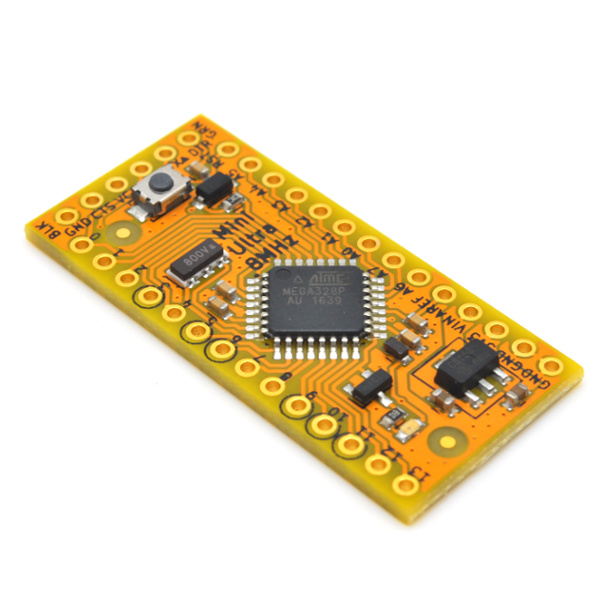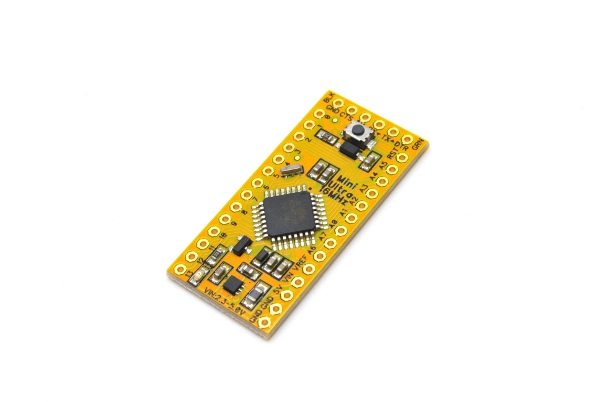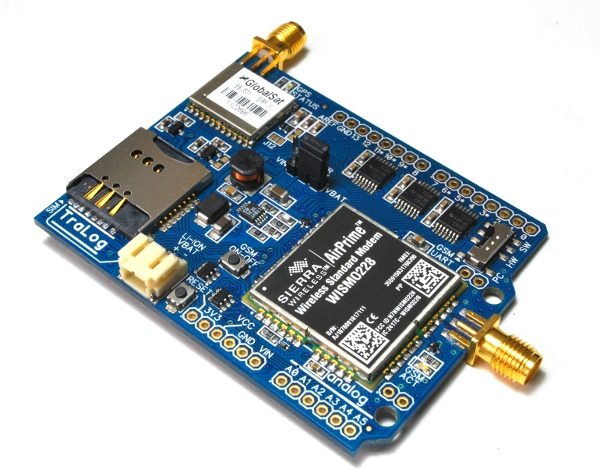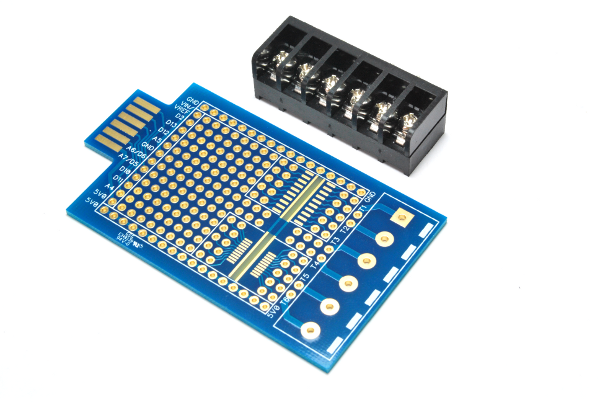Description
All official Arduino boards are carefully designed boards with individual unique features. One of the feature that we were looking for was low power consumption. Mini Ultra 8 MHz was designed to fill this void. We also came out with an Arduino compatible low power library to allow flexible low power management of the board. If your next project needs to run on battery or without main power, this is the board you might want to consider! Supporting carrier and application specific boards are coming soon!
Specifications:
- Compatible with Arduino IDE using “Arduino Pro Mini 3.3 V 8 MHz” as the board option
- Microcontroller – ATmega328P-AU
- Clock – External
ceramic8 MHzresonatorquartz crystal - Operating voltage – 3.3 V
- Low quiescent current (
1.6 μA1.5 μA) on-board 3.3 V250 mA500 mA regulator - Ultra low power – Minimum 1.7 μA in power down mode
- External DC source range –
3.4 – 6 V3.4 – 12 V - Indicator LED connected to digital pin 13 through a MOSFET
- FTDI 6-pin header
- Emphasis on low noise design approach:
- Analog reference voltage with LC filter
- Digital pins (D0-D13) breakout on 1 side of the board
- Analog pins (A0-A7) breakout on 1 side of the board:
- Analog pins A6 & A7 are pure analog input pins only
- 600 mil in between 2 breakout headers – suitable for breadboard usage
- Dimension – 18.41 mm x 39.37 mm (0.725″ x 1.55″)
- RoHS compliant – Yes!
Documentation:












Philip –
This looks like the perfect board for a low power project I’m working on, but can’t seem to buy it. Is it really shipping right now? Where’s the add to cart button.
Sean (verified owner) –
As Philip said: where is the add to cart? I would like to buy at least 2 of these.
– The add to cart button will not be shown if it is currently out of stock.
Rafael –
We ordered a few of these and experimented on low power successfully. We used this design to create our own board for wireless sensors. We are theoretically reaching 7 years of battery life on commercial AAs!!
HW and SW work really work great together here.
As an improvement would be nice to have updated schematics and BOMs. The Git repo seems to be missing latest updates to the board.
Paw Havsager –
I want to buy this board when is the store Again.
Aurelien –
How to connect batteries on that board? Any pictures or tutorial?
thanks
Administrator –
You can the batteries to the VIN power input pin and battery input range must be between 3.4-6V.
justin –
does it turn off below 3.4v and on above 3.4 automatically?
Administrator –
Below 3.4V, the MCU still runs but on a voltage rail lower than 3.3V. The on-board regulator will drop some voltage (few tens of mV) (also depends on how much current you are drawing at that time) at this point. Tested to run until VIN is 2.7V at minimum.
jrataa (verified owner) –
I have a 9 volt battery as a power supply. I see above that I need a maximum of 6 volts input. What’s the best power-saving way to step down the voltage?
Thanks for a great product!
LIM PHANG MOH –
It’s either you have a switching based step down converter that have very low quiescent current to bring it down below 6V OR use other types of more suitable battery. 9V battery is not a very good choice of battery to begin with.
jrataa (verified owner) –
Thank you Lim.
Anny Caroline –
Hi,
What is the maximum current rating of digital pins?
LIM PHANG MOH –
Sink and source current at 3.3V VCC is 20 mA per pin.